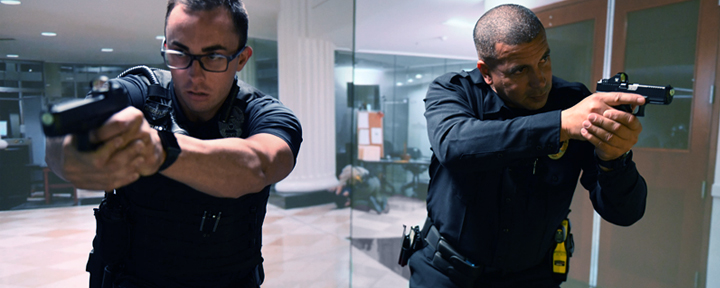
The spacing effect is a well-known phenomenon that suggests learning is more effective when spaced out over time, compared to cramming information into one session (Cepeda et al., 2006). For police firearms training, which requires officers to develop and maintain critical skills that can be crucial in high-pressure situations, utilizing the spacing effect can be particularly beneficial.
To implement the spacing effect, the following steps can be taken:
Create a long-term training plan: Instead of relying on sporadic training sessions, develop a training plan that spans several weeks or months. Spacing out training sessions can help officers retain information better and develop their skills more effectively (Murre et al., 2015). The use of the “extended briefing training” concept recommended by VirTra is one way facilitate this.
Vary training activities: Keeping officers engaged through varied training activities such as live-fire exercises, simulated scenarios, and classroom sessions can help maintain motivation and promote learning (Kirschner & van Merriënboer, 2013). Interleaved training is known to be more effective than traditional blocked practice. The variation of simulation topics allows this to easily be obtained.
Provide regular feedback: Feedback is essential for learning, so providing frequent feedback to officers can help them track their progress and identify areas for improvement (Bangert-Drowns, 1991). Instructor interaction coupled with the TMaR video feedback system provides immediate and accurate feedback.
Encourage self-reflection: Encouraging officers to reflect on their training sessions and identify what they have learned can help reinforce learning and improve retention (Schunk, 2012). The use of the VirTra four foundational Socratic questioning method helps to guide this.
Incorporate spaced repetition: Spaced repetition involves revisiting materials at intervals over time. By utilizing spaced repetition during training sessions, officers can retain information more effectively and develop their skills more quickly (Kang et al., 2007).
Implementing the spacing effect into police firearms training, trainers can help officers develop and maintain critical skills necessary for their duties. To achieve this, trainers can create a long-term training plan, include varied training activities, provide regular feedback, encourage self-reflection, and incorporate spaced repetition.
References:
Bangert-Drowns, R. L., Kulik, J. A., & Kulik, C. L. C. (1991). Effects of frequent classroom testing. Journal of Educational Research, 85(2), 89–99.
Cepeda, N. J., Pashler, H., Vul, E., Wixted, J. T., & Rohrer, D. (2006). Distributed practice in verbal recall tasks: A review and quantitative synthesis. Psychological Bulletin, 132(3), 354–380.
Kang, S. H. K., McDermott, K. B., & Roediger, H. L. (2007). Test format and corrective feedback modify the effect of testing on long-term retention. European Journal of Cognitive Psychology, 19(4–5), 528–558.
Kirschner, P. A., & van Merriënboer, J. J. G. (2013). Do learners really know best? Urban legends in education. Educational Psychologist, 48(3), 169–183.
Murre, J. M. J., & Dros, J. (2015). Replication and analysis of Ebbinghaus’ forgetting curve. PLoS ONE, 10(7), e0120644. https://doi.org/10.1371/journal.pone.0120644
Schunk, D. H. (2012). Learning theories: An educational perspective (6th ed.). Pearson Education, Inc.
Recently Published
Join Our Newsletter







